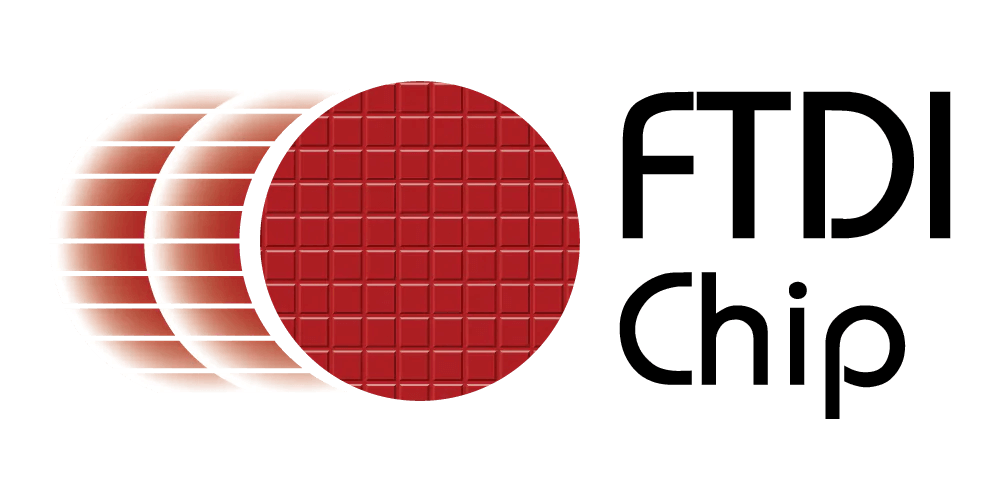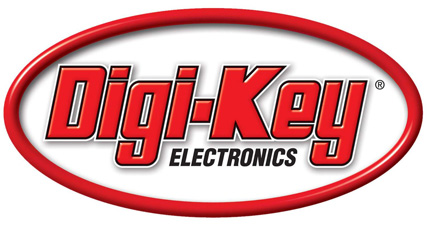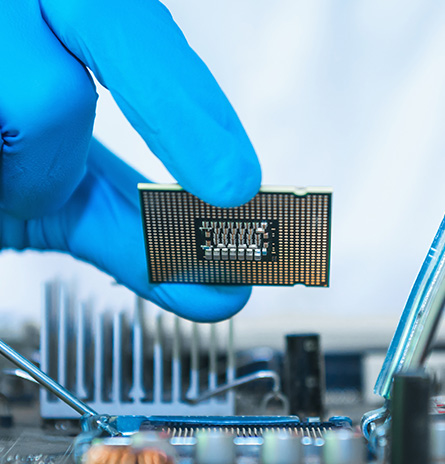Industrial Control / Monitoring
Industrial control and monitoring refer to the processes and technologies used to regulate, manage and supervise industrial operations and systems. These systems are crucial for ensuring efficiency, safety and productivity in various industrial settings such as manufacturing plants, power plants, refineries and transportation systems.
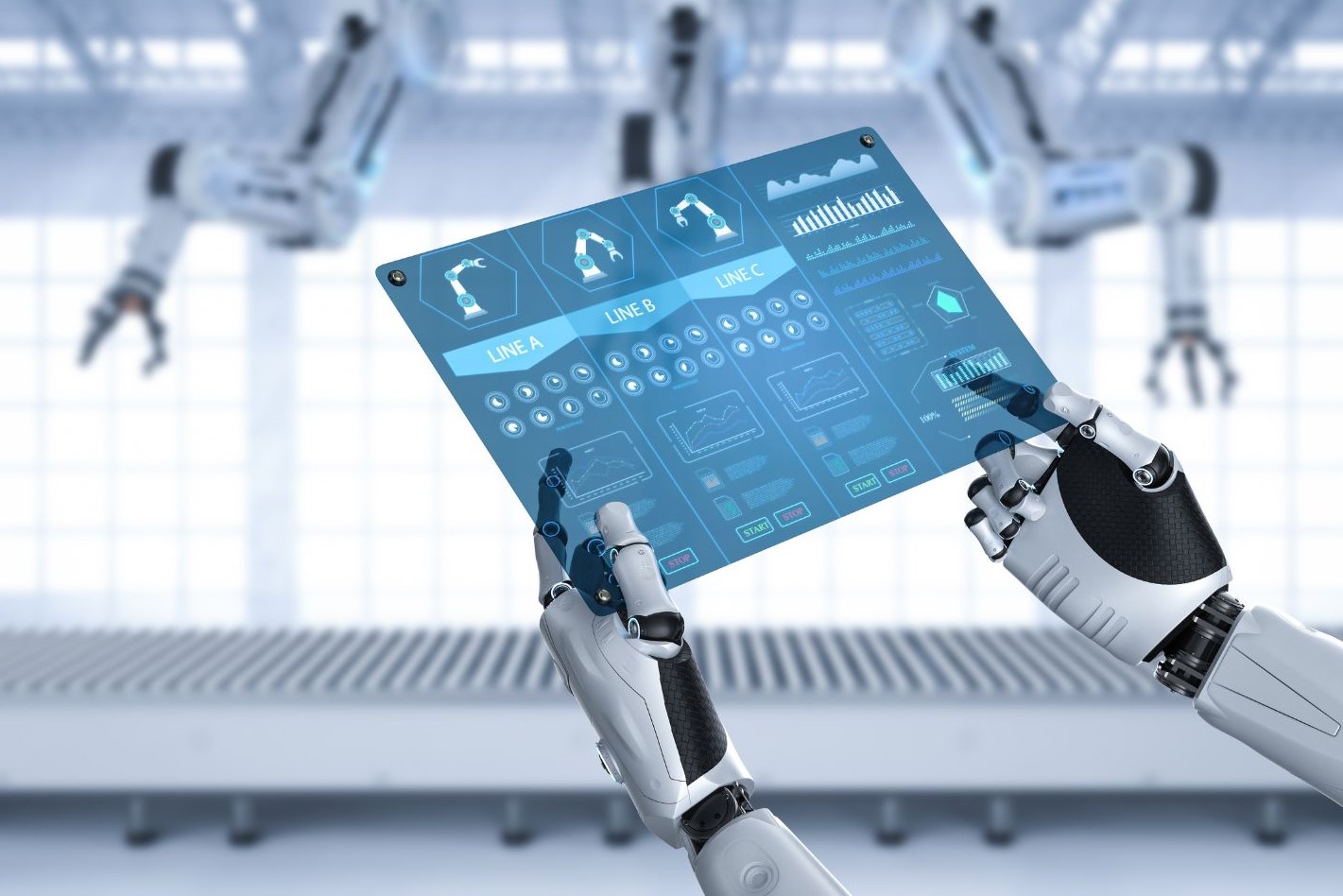
Below is a breakdown of the core components and concepts of industrial control and monitoring.
-
- Control Systems:
Industrial control systems (ICS) involve hardware and software components that regulate the operation of industrial processes. They receive data from sensors, analyse it, and make decisions to control actuators, valves, motors, and other devices. Control systems can be classified into several types:
-
-
- Programmable Logic Controllers (PLCs)
- Distributed Control Systems (DCS)
- Supervisory Control and Data Acquisition (SCADA)
- Sensors and Instrumentation
- Human-Machine Interface (HMI)
- Data Acquisition and Analysis
- Networking and Communication
-
A widely used component in industrial control and monitoring are FPGAs (Field-Programmable Gate Arrays), this is due to their flexibility, reconfigurability and high-performance capabilities. FPGAs are utilised in industrial settings in a number of ways, for example they are used for:
-
-
- Real-Time Processing
- Customization and Flexibility
- Interface Integration
- Parallel Processing
- Integration with CPUs and SoCs
- Long-Term Support and Lifecycle Management
-
An application example of using FTDI devices for industrial control and monitoring can be seen with their integration with FPGAs.
FT232H (single channel) and FT2232H (Dual channel) have become popular choices for integrating with FPGAs. FT232H/FT2232H are USB Hi-Speed to Serial UART/FIFO/JTAG/SPI/I2C ICs.
They have the capability of being configured in a variety of industry standard serial or parallel interfaces. What makes this possible is the multi-protocol synchronous serial engines (MPSSEs) which allow for communication using JTAG, I2C and SPI, and in the case of the dual channel FT2232H on two channels simultaneously.
Some key hardware features of FTx232H series ICs are:
-
- Entire USB protocol handled on the chip. No USB specific firmware programming required.
- USB 2.0 Hi-Speed (480Mbits/Second) and Full Speed (12Mbits/Second) compatible.
- Multi-Protocol Synchronous Serial Engine (MPSSE) to simplify synchronous serial protocol (USB to JTAG, I2C, SPI or bit-bang) design.
- UART transfer data rate up to 12Mbaud. (RS232 Data Rate limited by external level shifter).
- USB to asynchronous 245 FIFO mode for transfer data rate up to 8 MByte/Sec.
- USB to synchronous 245 parallel FIFO mode for transfers up to 40 Mbytes/Sec
- Supports a half duplex FT1248 interface with a configurable width, bi-directional data bus (1, 2, 4 or 8 bits wide).
- CPU-style FIFO interface mode simplifies CPU interface design.
- Fast serial interface option.
- FTDI’s royalty-free Virtual Com Port (VCP) and Direct (D2XX) drivers eliminate the requirement for USB driver development in most cases.
- Adjustable receive buffer timeout.
- Configurable ACBUS I/O pins.
An example of the use of FT232H/FT2232H in FPGAs utilizes FT232H and FT2232H for UART, SPI and sync FIFO communication. Below is a block diagram of how the ICs are integrated into the FPGA design.
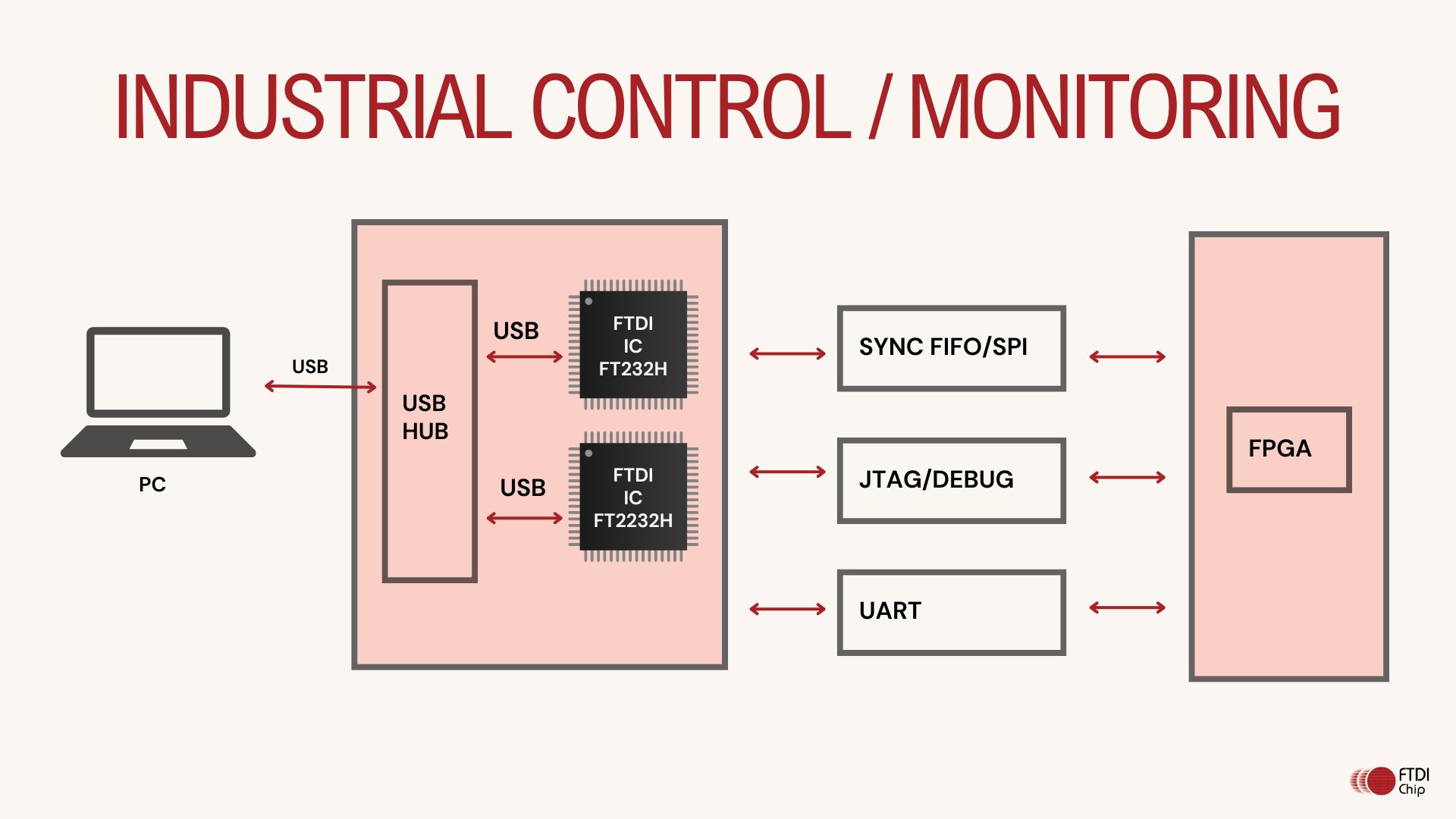
This FPGA example uses the two channels of FT2232H for JTAG/debug capabilities, along with regular UART communication that allows the user to connect the FPGA with a USB host or PC. The design also has a sperate single channel FT232H for either SPI or synchronous FIFO communication.
This example shows multiple possibilities when integrating FTDI ICs into FPGA designs, but how does this relate to industrial control and monitoring? Well, FTDI devices can be used along with FPGAs to provide additional communication interfaces and I/O capabilities for industrial control and monitoring applications including:
-
- Interface Connectivity
- Serial Communication
- SPI and I2C Communication
- GPIO Expansion
- Programming and Debugging
Recommended ICs:
